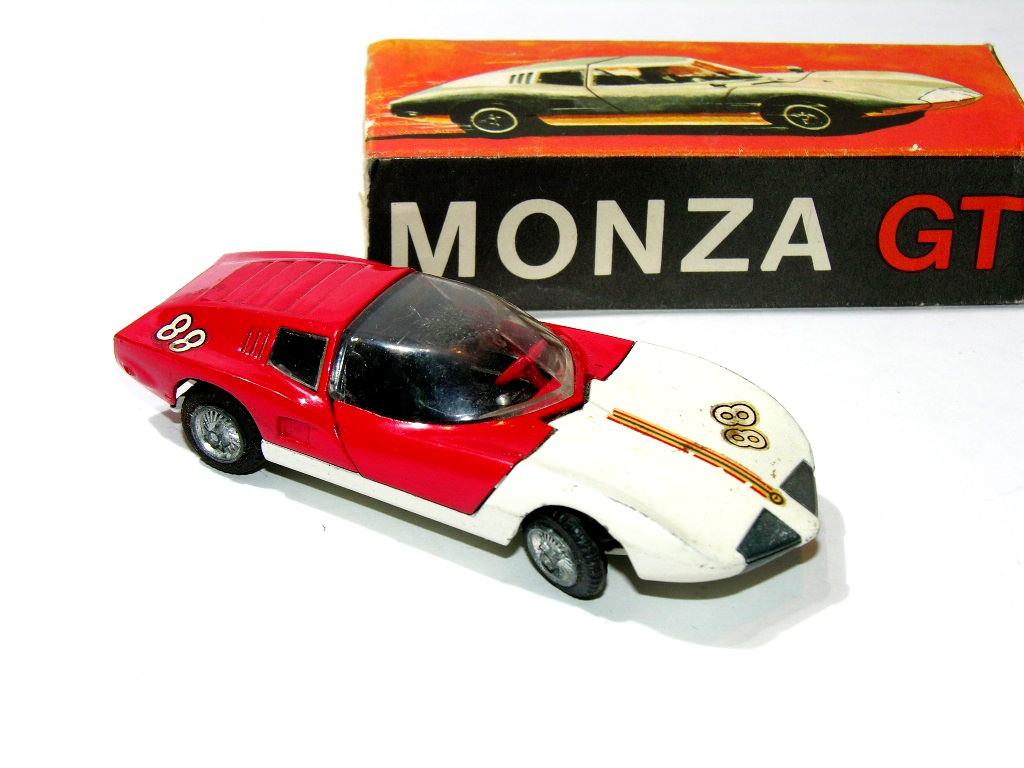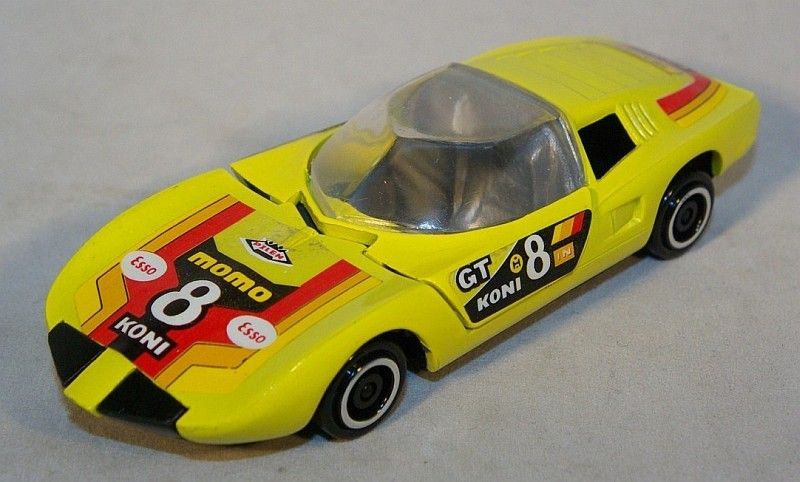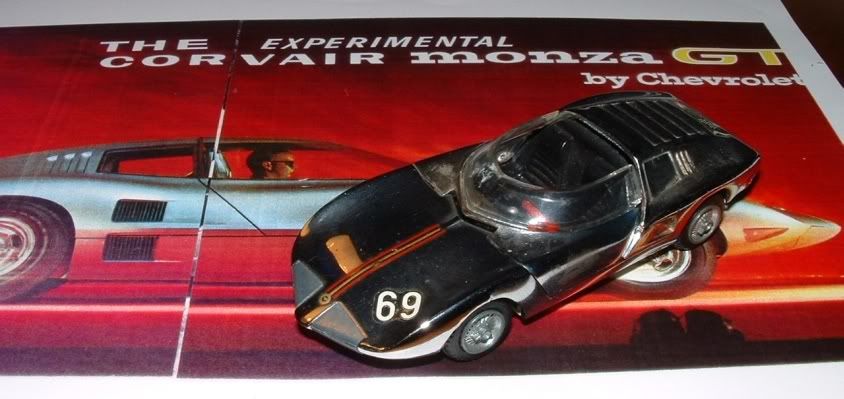Post by ferrari512s on May 14, 2014 22:40:57 GMT -5

One of the highlights of the 1962 New York Auto Show was GM’s unveiling of the Corvair Monza GT concept car, featuring a fiberglass body, a large Plexiglass windshield, and an air-cooled 6-cylinder engine placed ahead of the rear axle.
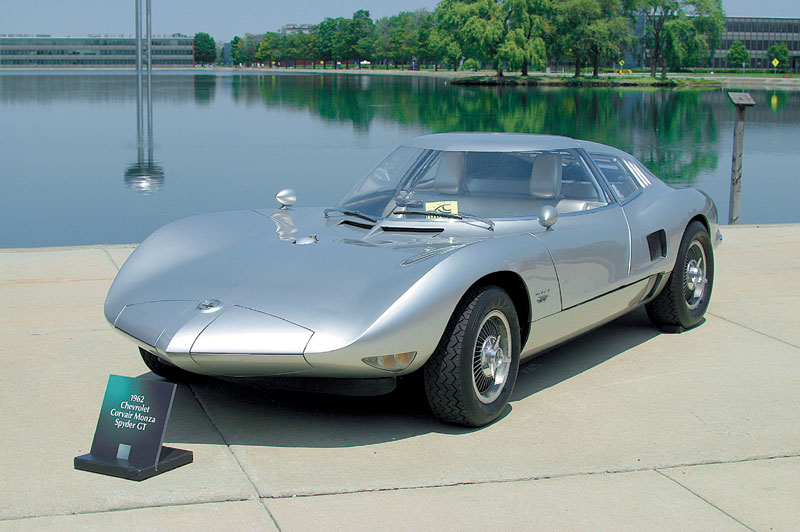
The Chevrolet Corvair Monza GT was a 1962 mid-engined experimental prototype automobile based on the early model Chevrolet Corvair series. Essentially a concept car, the Monza GT did not enter production.
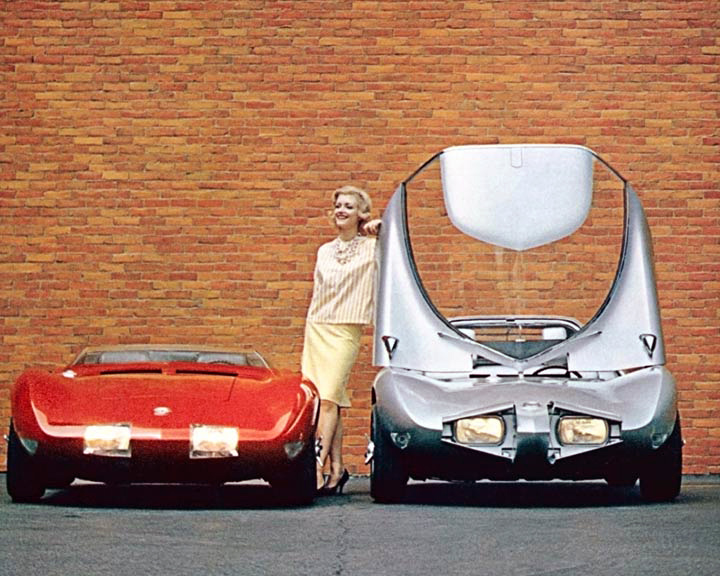

Though they bore a hint of Mako-shark-era Corvette styling, the 1962 and 1963 Chevrolet Corvair Monza GT and SS concept cars looked like nothing else: smooth, well-formed, and ultra-clean. Shape and detailing were vintage period GM, yet also somewhat Italian.

GM designer L. W. Johnson got a look at Bertone’s two-seat, Corvair-based Testudo as it was nearing completion in 1962-1963 and happily informed the Italians about his own company’s latest Corvair special.

Under direction by Bill Mitchell, the Corvair Monza GT coupe was designed by Larry Shinoda and Tony Lapine in 1962, borrowing from the Bertone designed Testudo concept car.

Like the earlier design, the GT doors swung upward and were actually a front hinged canopy that extended into the B section; the rear engine cover also hinged at the rear.

The engine used was a standard Corvair 145 cu in (2,380 cc) 102 hp (76 kW), flat six with two carburetors. Unlike the production Corvair, the GT engine was mounted ahead of the transaxle, turned around 180 degrees and mounted as a mid-engine layout.
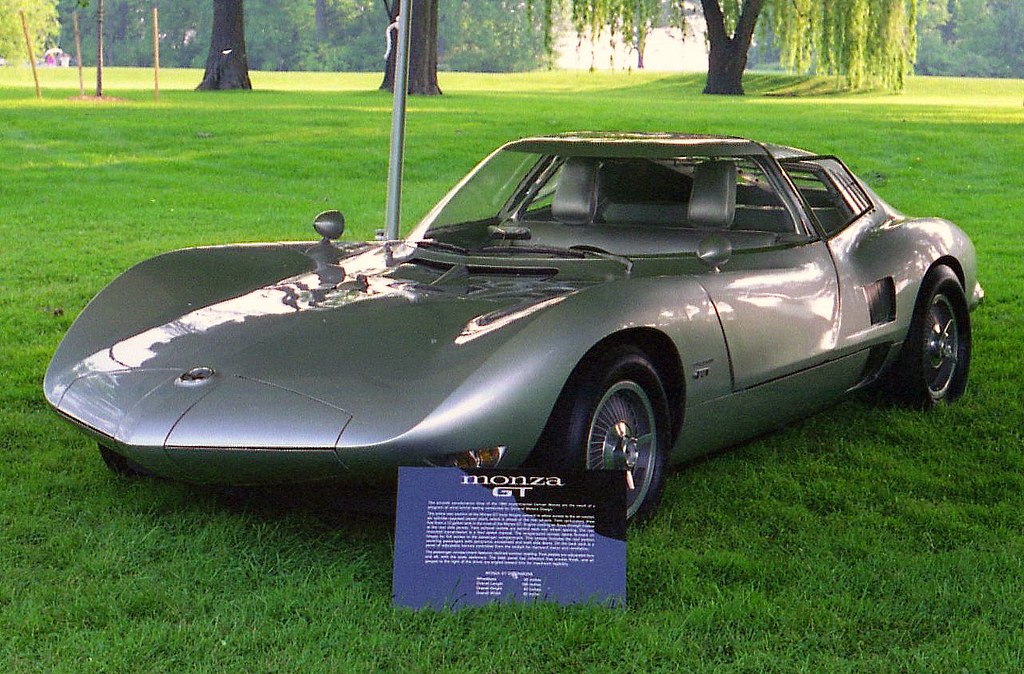
The chassis was on a 92 in (2,337 mm) wheelbase, 16 inches (406 mm) shorter than production cars. The overall dimensions were similarly reduced with a length of 165 in (4,191.0 mm), and a height of 42 inches (1,067 mm), creating a small but well-proportioned sports car.

Though built in 1962 and tested informally that year at Elkhart Lake and Watkins Glen, the new Monza GT fastback wasn’t publicly unveiled until April 1963, when it handily stole the limelight at the New York Auto Show along with a racy open sibling called the Chevrolet Monza SS.
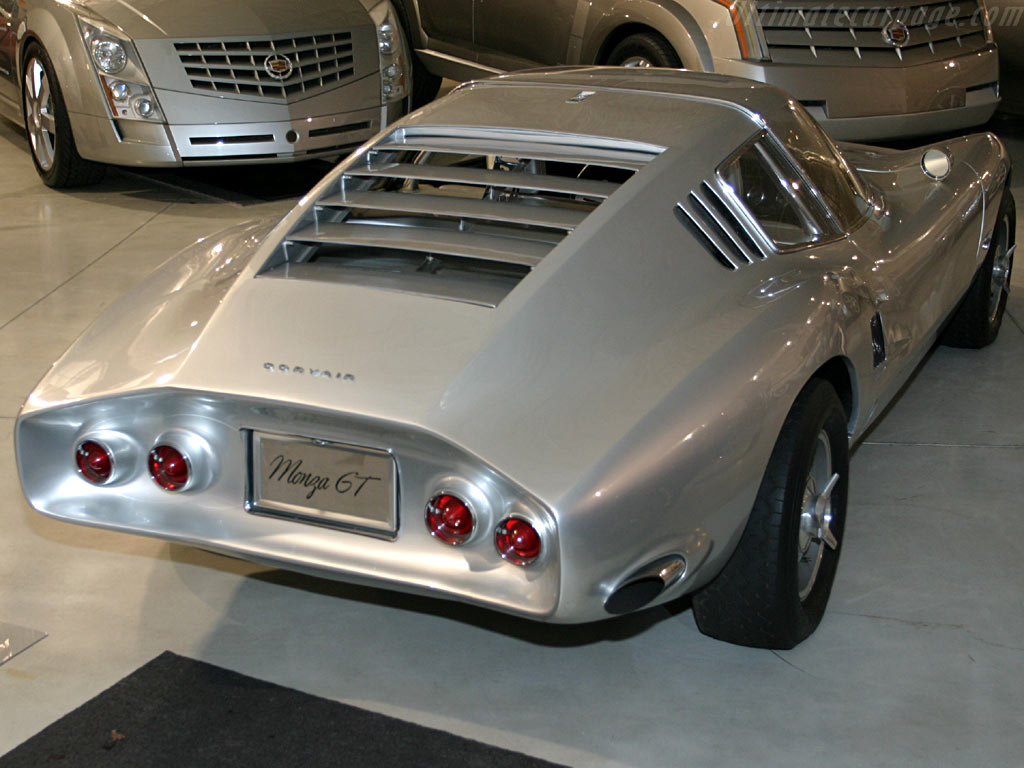
Both these experiments were fiberglass-bodied two-seaters with four-wheel disc brakes, magnesium-alloy wheels, hydraulic clutches, stock four-speed-manual Corvair transaxles, fixed seats and adjustable pedals.

Both were also cleanly styled in the billowy idiom then favored by General Motors, with bumperless fronts and oblong headlights concealed behind large "clamshell" lids.
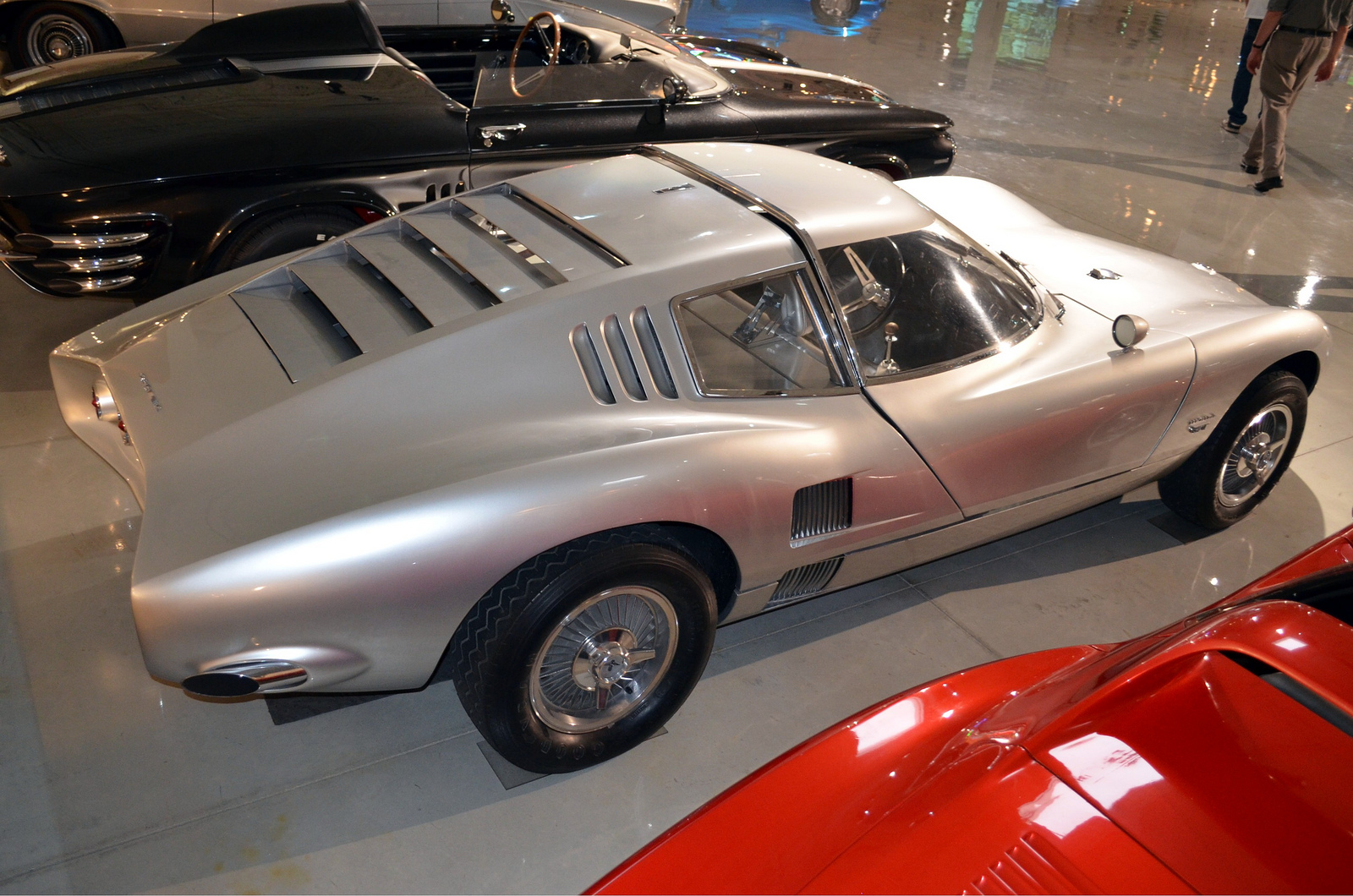
Yet for all their similarities, the Chevrolet Monza GT and SS differed markedly in some ways. The GT coupe, for instance, carried its engine ahead of the rear axleline; the SS roadster put it behind, as in production Corvairs.
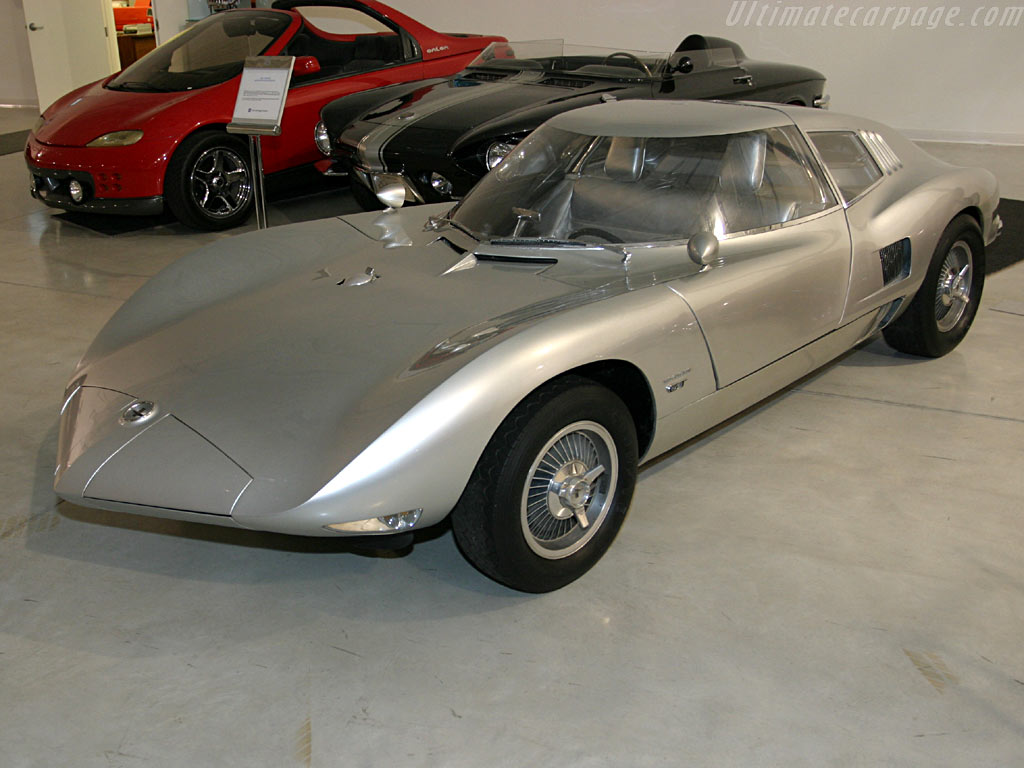
Wheelbase was 88 inches on the Monza SS, 20 inches shorter than stock, but 92 inches on the more visually aerodynamic Monza GT. Still both were quite appealing.
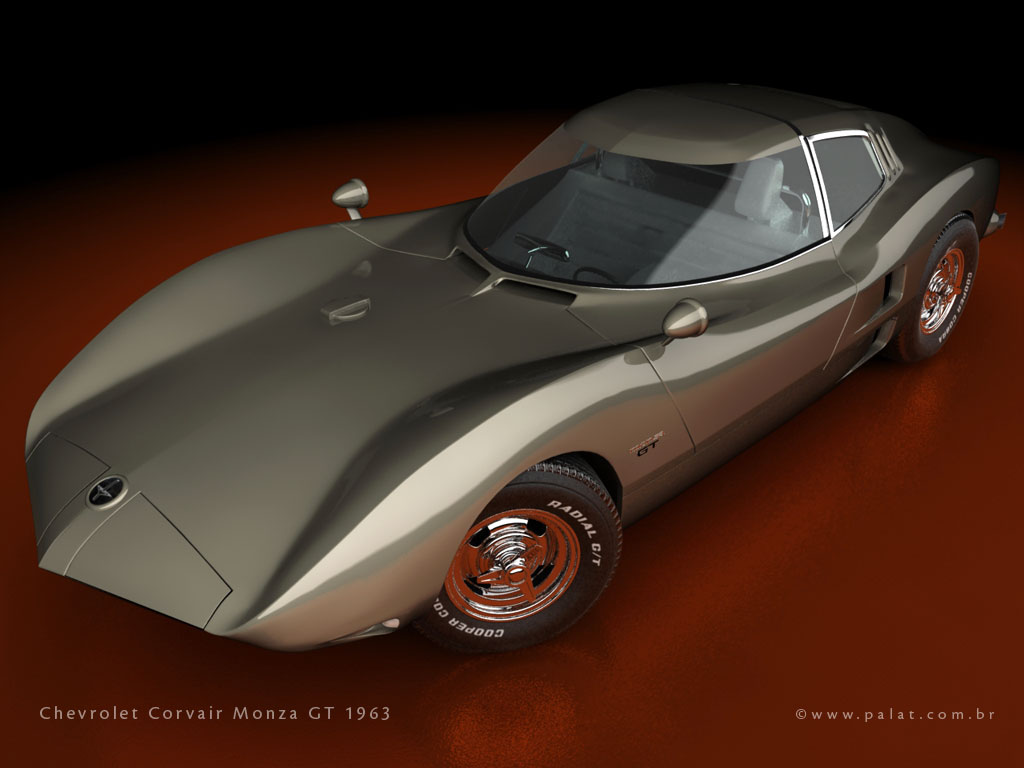
Like production Chevrolet Corvairs, the roadster offered a small front luggage compartment but the coupe did not. Inside, the Monza SS dash was stark but highly informative, with a large tach and speedometer, plus five auxiliary gauges.
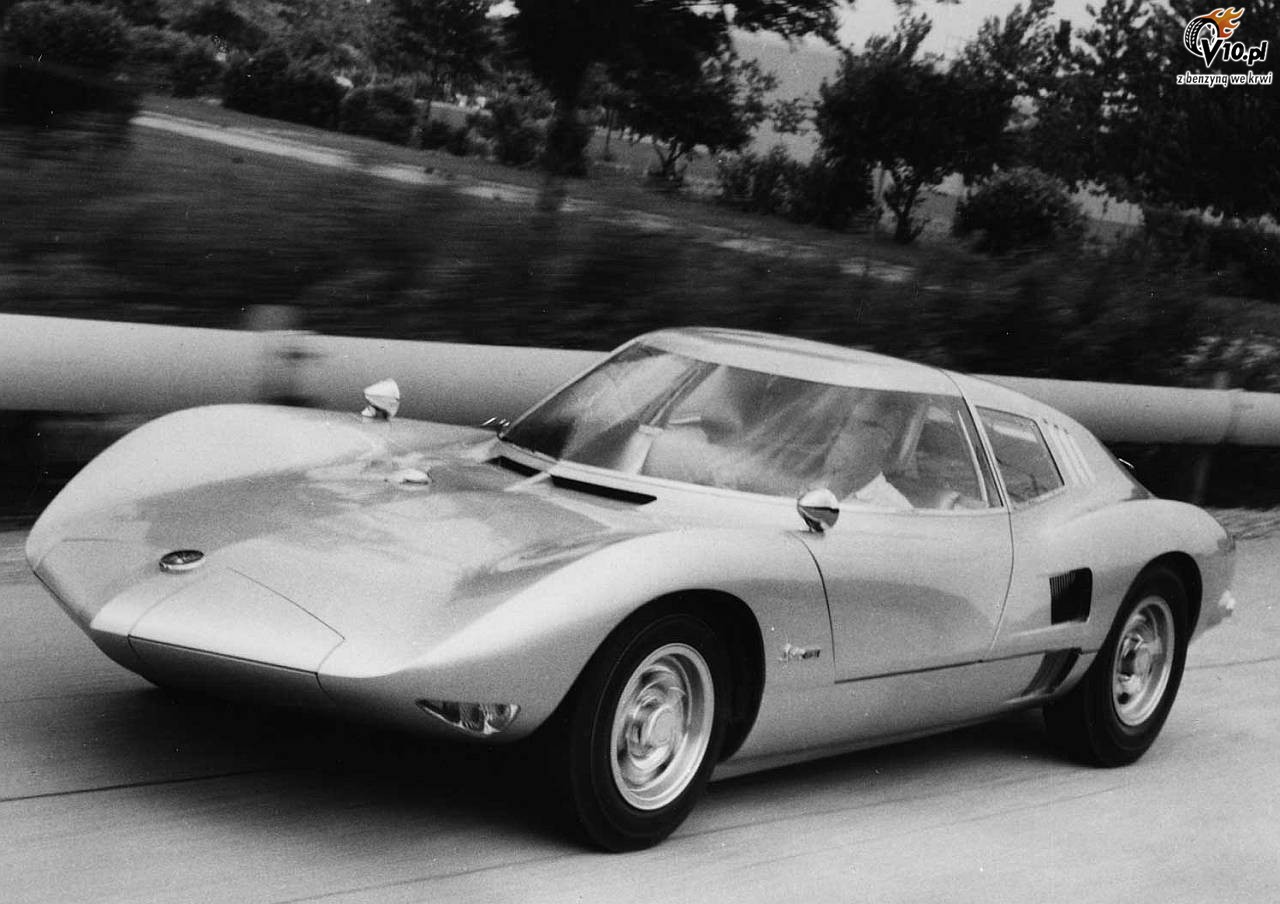
Had a production version materialized, the low, racing windshield and fixed side windows would have been replaced by a conventional screen and roll-up glass.
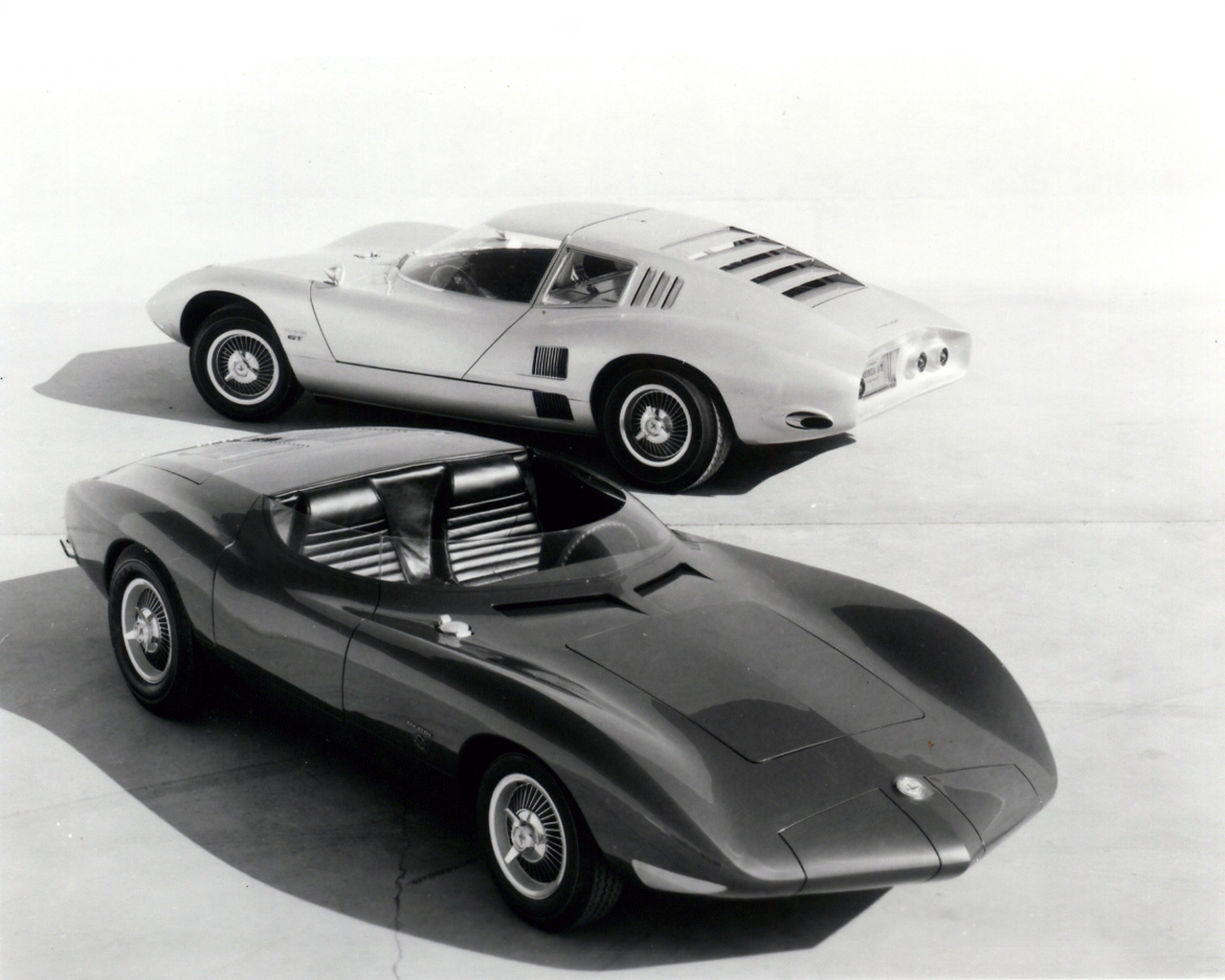
The Chevrolet Monza SS also had normal doors where the GT used a Testudo-style lift-up cockpit canopy, again front-hinged at the cowl and extending back to the B-pillar region.

Also echoing Bertone’s work was the rear-hinged hatch that swung up to reveal the engine, which was a two-carburetor version for quiet, smooth running. The SS used a four-carburetor setup.
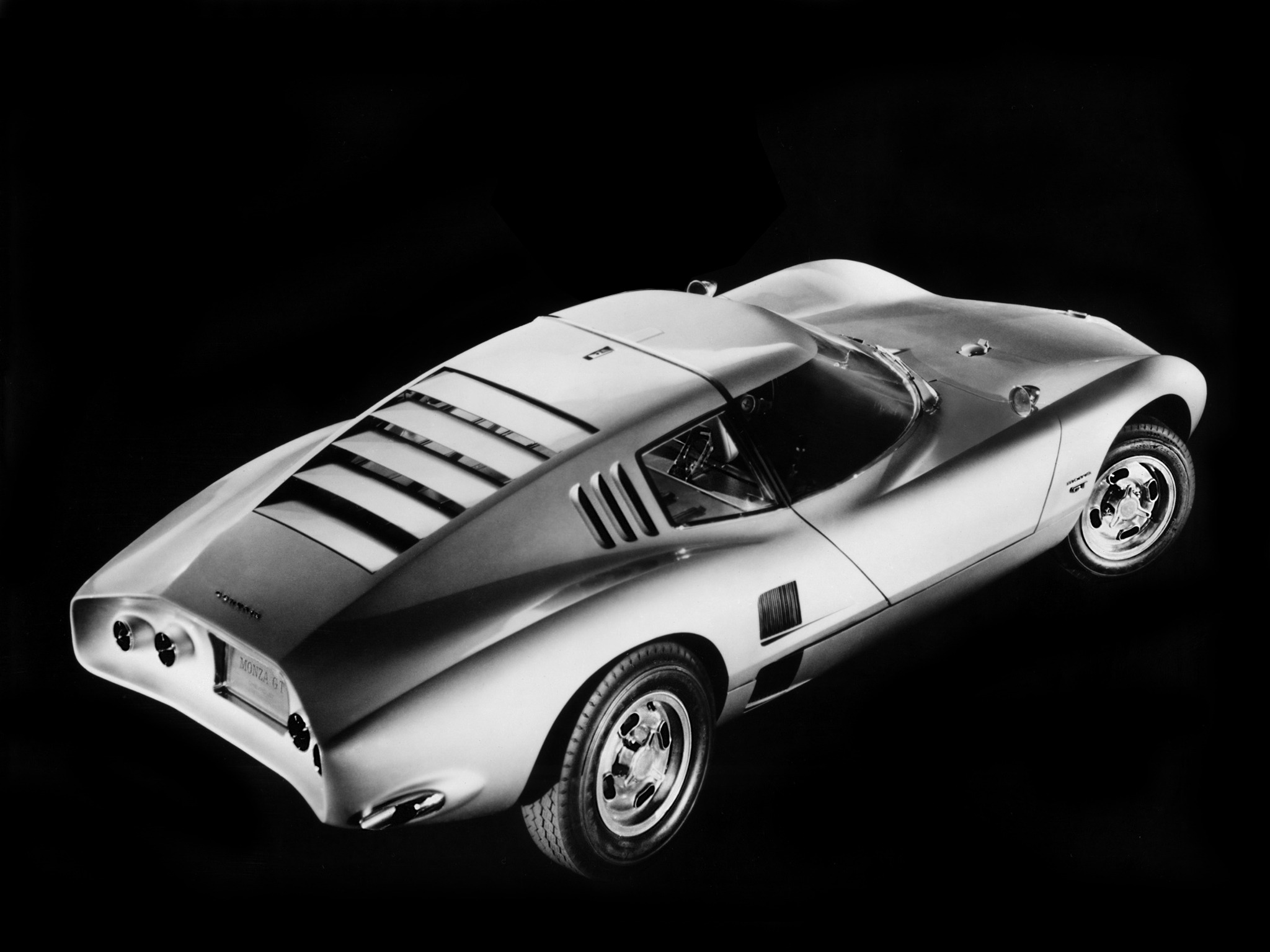
Though often credited solely to GM design chief Bill Mitchell, Corvair Monza GT and SS styling was actually the work of Larry Shinoda, now celebrated for his work on various Corvettes and early-1970s Mustangs, and Anatole "Tony" Lapine, who would go on to design Porsche’s 928. Both the GT and SS were created under project code XP-797.

The Chevrolet Monza SS at least came fairly close to actual production – as close as any Corvair special. Remember that when these Monzas first appeared, Ford hadn’t released the Mustang, and Corvair was still GM’s only low-cost sporty car.

Had the redesigned 1965 Corvair sold better against the Mustang, it’s not inconceivable that a street SS or GT could have appeared by 1967 or 1968 – which means GM might not have needed to create the Camaro, with all the expense that entailed.
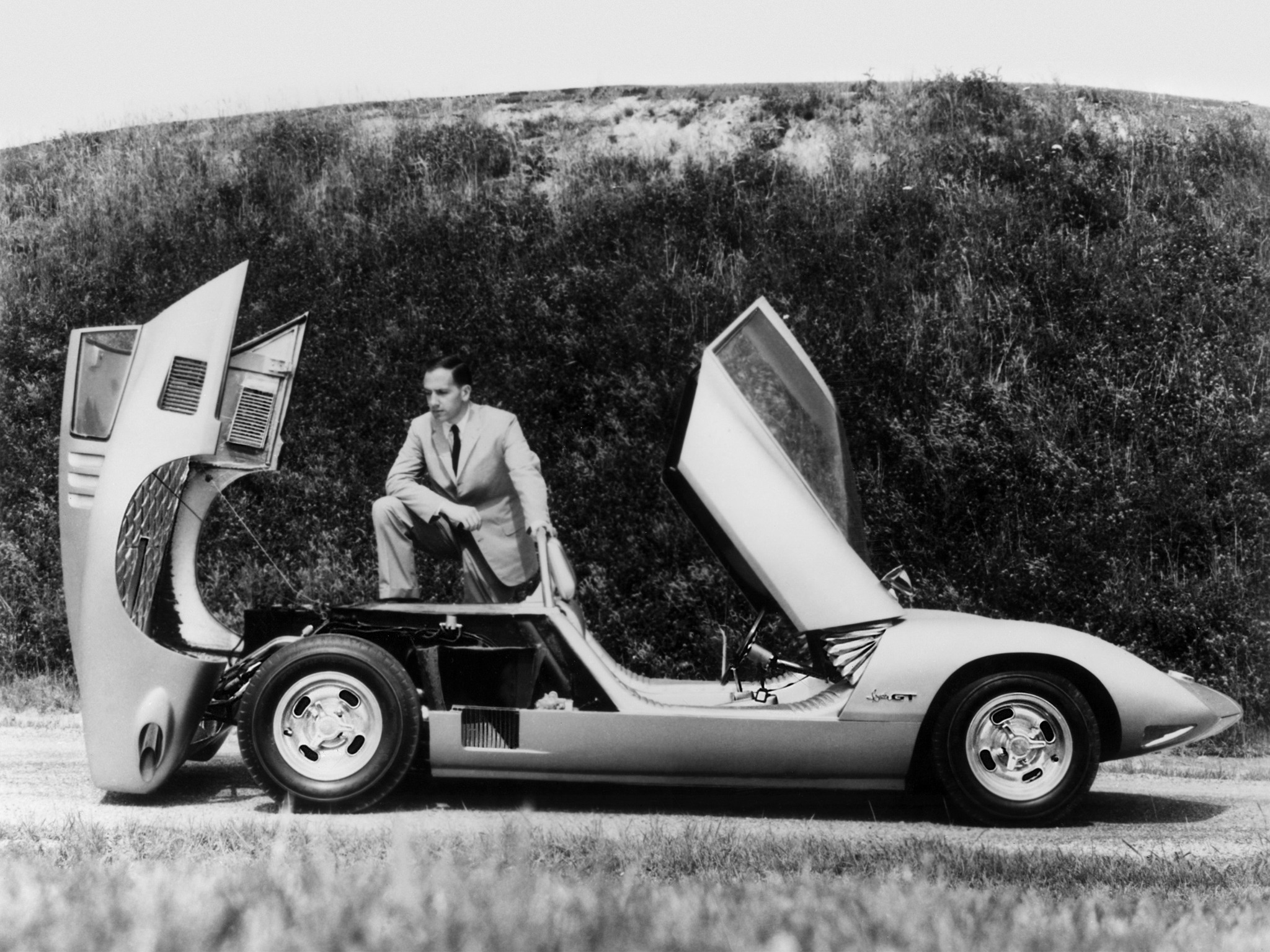
But the Mustang sold like nickel hamburgers from day one, and GM quit working on future Corvairs entirely.

Which was a shame, because the Mustang wasn’t half the sports car these Monzas might have been.

As Road & Track said at the time: "The enthusiast market sorely needs a boost, and these are two cars that could do it." Come to think of it, they still could.



Source:
auto.howstuffworks.com
www.carstyling.ru/en/car/1962_chevrolet_corvair_monza_gt/

1962 Chevrolet Corvair Monza GT Die-Cast and Model Kits
Large 1/20 scale. The history of the Chevrolet Corvair was mixed, but no one could doubt the beauty of the Corvair Monza GT show car. Crowds around the USA and Canada were wowed by the futuristic and luxurious vehicle. The design was absolutely ground-breaking for 1962. Other cars would copy certain traits for decades. Very nicely detailed model from original Eidai molds. Made in black, white, red, clear, chromed and rubber plastic with some metal parts. Large 1/20 scale. Features full engine and interior detail, opening passenger compartment, opening hood and steerable front wheels.
A beautful design concept car by Chevrolet that never went into production. A brilliant adaption by Tekno that produced this model in several different paint schemes. This one is in white and red with "88" decals. The whole cabin opens towards the front and the rear opens to display the engine. The car also has opening and closing headlight covers in addition to Tekno's patented suspension and steering. A great and sleek model that displayes beautifully.

